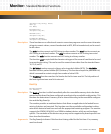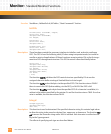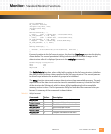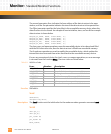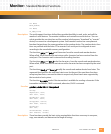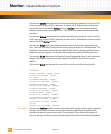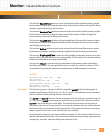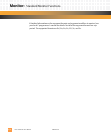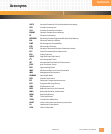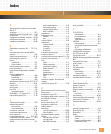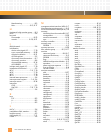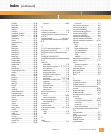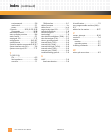
Monitor: Standard Monitor Functions
10002367-02 PmT1 and PmE1 User’s Manual
8-45
The function ByteAddrTest performs a byte-oriented test of the specified memory region.
Each location is tested by writing the lowest byte of the location address through the entire
memory region and verifying each location.
The function WordAddrTest performs a word-oriented test of the specified memory region.
Each location is tested by writing the lowest word of the location address through the
entire memory region and verifying each location.
The function LongAddrTest performs a long-oriented test of the specified memory region.
Each location is tested by writing the location address through the entire memory region
and verifying each location.
The function RotTest performs a long word-oriented test of the specified memory region.
Each memory location is tested by rotating a single bit through the long-word location.
The function PingPongAddrTest is used to test the reliability of memory accesses in an envi-
ronment where the data addresses are varying widely. The intention is to cause the address
buffers and multiplexors to change dramatically.
The function Interact is used to test byte interaction in the memory region specified by
StartAddr and EndAddr. The main goal of this test is to check for mirrors in memory. This is
accomplished by testing the interaction between bytes at different points in memory.
xprintf
xprintf(CtrlStr, Arg0, Arg1 ... ArgN)
char *CtrlStr;
unsigned long Arg0, Arg1, ... ArgN;
xsprintf(Buffer, CtrlStr, Arg0, Arg1 ... ArgN)
char *Buffer, *CtrlStr;
unsigned long Arg0, Arg1, ... ArgN;
Description: This function serves as a System V UNIX®-compatible printf() without floating point. It
implements all features of %d, %o, %u, %x, %X, %c, and %s. An additional control statement
has been added to allow printing of binary values (%b).
The xprintf and xsprintf functions format an argument list according to a control string Ctrl-
Str. The function xprintf prints the parsed control string to the console, while the function
xsprintf writes the characters to the Buffer. The control string format is a string that con-
tains plain characters to be processed as is, and special characters that are used to indicate
the format of the next argument in the argument list. There must be at least as many argu-
ments as special characters, or the function may act unreliably.
Special character sequences are started with the character %. The characters after the % can
provide information about left or right adjustment, blank and zero padding, argument con-
version type, precision, and more things too numerous to list.



